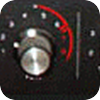hi out there,
i just recieved a Kahler Human Clock, with no manual, having a hell of a time trying to make it work properly! anyone out there with experience using this thing that could help me out?
..,. .thanks in advance!
grateful for any comments/tips/suggestions
Comments
hi mark, i cant believe it - finally somebody who might be able
hi mark, i cant believe it - finally somebody who might be able to help me !! i'd just about given up hope! i bought the human clock a few weeks ago, just about managed to get it to start my sequencer, but tempo is double what it should be for some reason (sequencer resolution?), and didnt seem to slow down or speed up as i varied the input tempo...
how do you find the unit though? have you managed to get any sort of reliable results from it? do you have to be really basic with the beats that you feed it, or can it average out tempo from a bass drum for example?... basically anything you can tell me about using the thing would be great - any setup tips etc..
thanks in advance!
Hi thylord, I've been very happy with mine, but there are limit
Hi thylord,
I've been very happy with mine, but there are limitations within which you have to work. The unit was originally designed to be triggerd by a live drummer and to output to a MIDI device with sequenced tracks. I use mine as a "poor man's SMPTE", allowing me to sync a sequencer to previously recorded audio tracks. The unit works best with Percussive input (i.e. kick, snare, etc.), but can be set up to work with bass, guitar or keyboard input. There is a switch on the back of the unit marked "SUST.-PERC." to select between a sustained type of input or percussive type of input. It likes a signal of at least -30dB to activate the trigger.
The tempo doubling you are experiencing is caused by the unit needing to establish the length of one measure before it begins triggering MIDI output. Quoting the manual, "The Human Clock needs to know how long a measure is in order to know the tempo at which to play initially. Communicating this to your Clock is easily done during a typical count-off. Think of the tempo you want and hit the kick drum on 1 (that is, the first beat of the imaginary measure at the desired tempo). Now think to yourself, "2, 3, 4," in tempo, and hit the kick drum on the next 1. Now the Human Clock knows how long a measure is, so it knows the tempo. The next time (the third time) you strike the drum, the Human Clock will start whatever sequenced material is programmed. The Clock will assume that this third hit is on 1. (Every time the drum is struck thereafter, the Human Clock recalculates the tempo)." It will definitely follow tempo variations, but within limitations.
Again, from the manual, the front panel controls:
SENSITIVITY: Controls how much of a tempo change is sent fromthe Human Clock. A setting of 1 means the most change; a setting of 4 means the least change. For most applications use a setting of 2.
SMOOTH: Controls two different functions, WINDOW and SPEED. WINDOW refers to the time around each 8th note that the trigger signal is accepted. SPEED refers to how fast the clock will adjust to change in tempo. Note: SMOOTH is read only when RESET or RESTART is pushed.
ADVANCE: Compensates for processing and/or MIDI delay in the drum machine, sequencer or code converter the Hman Clock is driving. A higher number means more advance. Note: ADVANCE is read only when RESET or RESTART is pushed.
FEEL: Allows you to put the drum machine or sequencer more "on top of" or "behind" the beat, This is in addition to or separate from ADVANCE. The FEEL parameter is read at every measure, allowing adjustment while the machine is playing.
LEVEL: Controls the gain of the trigger source to the Human Clock. Note: Over-driving the level will cause poor performance.
MASK: Controls how long the Human Clockis "deaf" (or masked) to more incoming trigger signal. The length of time the trigger LED glows is the length of the mask. To read a kick drum, a mask of 2 should work fine. To read a bass, piano or other sustain type of instrument, a longer mask is recommended.
RESTART: Prepares the Human Clock to resume with the tempo it last maintained when it sees the next trigger input.
RESET: Clears the Human Clock and tells it to get ready for a new tempo.
The manual is available at: http://www.markglin…
I hope some of this is helpful. If you have any other questions, let me know. Good luck.
Mark


Can you be more specific? What problems are you having?
Can you be more specific? What problems are you having?